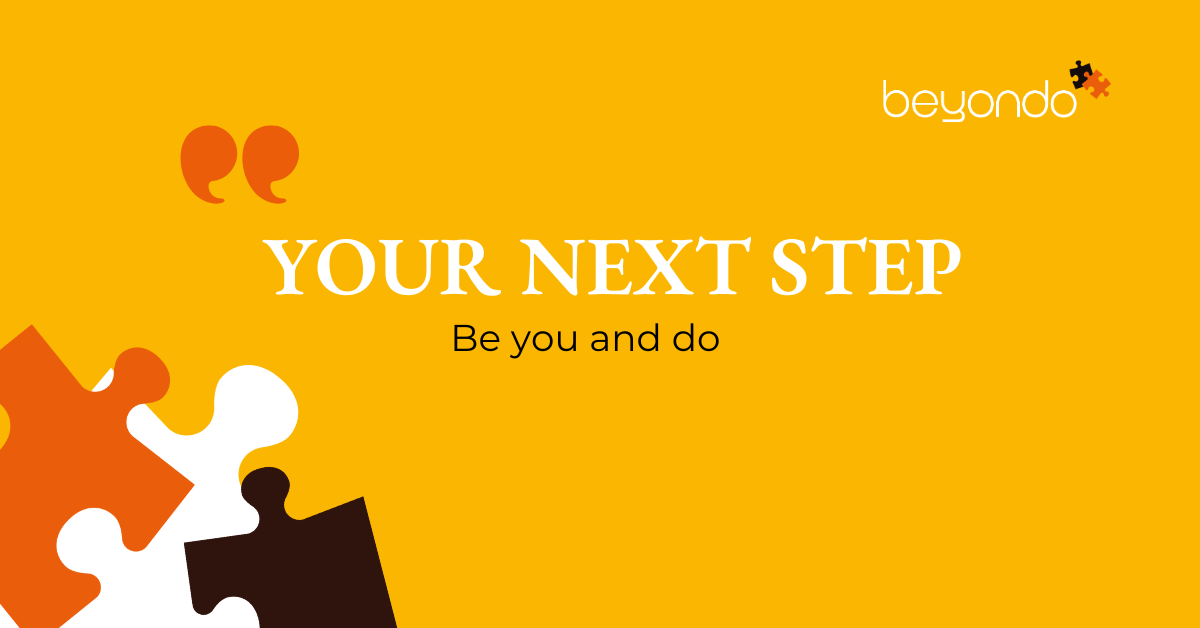A recruitment process requires a lot of resources; both in time and money, and there are many steps that need to be right. As a recruitment partner for international and national recruitment, we are happy to share some of our recruitment tips!
STEPS FOR A SUCCESSFUL RECRUITMENT:
Define what you need before you start recruiting
The first thing you need to do to get a good recruitment process is to have clear planning. Define what you need for a person based on what the role, team and organization look like. What does it take to be the right person for the job and what skills are needed? Also decide whether the person should be a senior, a junior, what knowledge is needed, but above all, what the person should take a place on the team. Think about what skills and person you need to complement to achieve your long-term goals.
Include your organization's strategy in the recruitment process.
The organization's long-term strategy is relevant for all recruitments made. It is important to think about what it looks like several years in the future and how your business will develop. Who has retired, what planned parental leave is available or any takeovers.
Work with search the right way
To find the right kind of candidates, you need to think about where your target group is. What skills are you looking for and in what channels are those people? Remember that having many candidates in the selection process does not mean that you have a better chance of finding the right one. Quality is more important than quantity when it comes to recruitment processes. How you formulate the requirement profile and what tonality and language is used in the job description will also affect who applies.
Invest in an objective selection process
In order to find the right person for the job, it is important to make a neutral and conscious
selection. Feel free to let more than one person review the applications. In the first screening, you can go to relevant education, experience, possible language skills and practicalities as a place of residence if it is important. The second selection should be more about personality, skill, abilities and development potential.
Make everyone in the recruitment process aware of what they call unconscious bias, i.e. preconceptions, so as not to let it stand in the way of attracting the right talent. During the recruitment process, it can be a good idea to let the candidate meet several colleagues – for example, a person from HR, the nearest manager and a colleague. This gives you a more diverse picture of what the candidate is like as a person. Depending on the role, you can choose to do one or more interviews – many people do the first interview on the phone and then a more in-depth interview in a personal meeting.
Always reconnect
Feedback is important, including to the candidates being screened. Keep in mind that there is always one person behind each application, who has chosen to apply for a position at your company. The worst thing a candidate can hear from a recruiter or company is not hearing anything at all. So always inform the applicants about what the recruitment process looks like, and reconnect with everyone, even those who do not move forward. Then you as a company gain credibility in the long run!
Six tips to find the right person for the job
The person should fit both the team and the organization
Define the type of person needed in the team and what they need to add. Go back to the organization and the team and don't just think about the role.
1. Look in the right place
Recruiting is time-consuming and to make the process more efficient, it is important to look at the places where the candidates are located. Try to look at as few platforms as possible and focus on the channels where you have the best chance of reaching the right candidate. It costs a lot to have an ad out and above all to process all applications, so think about relevance in advertising.
2. Create a good first impression
Communicate with the candidate throughout the recruitment process. Everyone who is applying for the job has become involved in your company, and it says a lot about the organization and how you treat candidates and reconnect during a recruitment process.
3. Select a relevant recruitment team
It can be good to have a broad team, not just HR people but a combination of other professions. Bring your team into the whole process, and be sure to be inclusive and objective.
4. Disconnect preconceptions
Try as best as possible to be objective and maintain a neutral view of the candidates throughout the recruitment process. If you look beyond the prejudices, you will have a better chance of attracting the right talents.
5. Look beyond the set criteria and your own network
To achieve your goal of finding the right person for the job, you sometimes need to broaden your view of who you are looking for and where you are looking. Don't be afraid to go outside the box and think new.
6. Act fast!
Do not let the recruitment process drag on too long. It is always good to have a timetable but dare to shake it if necessary. Many times you have steered too hard and decided when to collect CVs, when to start interviewing and so on. It may be worth saving time by skipping steps and daring to do otherwise.
How do I make a good requirement profile when recruiting?
Based on your recruitment planning and strategy, you need to make a requirement profile for your desired candidate. It is an important part of a recruitment process and is simply a description of the person to be recruited. Be sure to update the requirement profile for each new recruitment, even if it concerns a similar role. In addition to the direct qualifications required for the position, you need to ask yourself and answer some other questions to supplement the requirement profile:
- What challenge should the service solve? What goals should be achieved, what should be done and why?
- What does it take to do the job, in terms of personality and experience?
- What kind of person is needed to complement the team?
- What skills and experience are required for the role?
- What skills, skills and abilities are required for the role?
How do I make a good job ad when recruiting?
Use a title that converts
Thus, use words on services and titles that potential candidates are looking for. Be careful when writing the ad that you use inclusive and gender-neutral expressions and word choices.
Have an appealing introduction
Start by describing the service and the company and be happy to be personal.
Tell the company's story
It is important to highlight what kind of company you are. Remember that the candidate should also be eager to work with you! If you're talking about having ping-pong tables and soda fridges, be aware that it might not appeal to everyone.
Sell the mode
In addition to describing the position in detail, also highlight aspects such as the role's challenges and benefits as well as the team, working climate and benefits.
Sell the company’s venue
Describe where the office is located and what is in the surroundings. If you work remotely, it can be good to highlight how you help with ergonomics when employees work at home and how you work with team-building remotely.
Repeat why you should apply for the job
List the main reasons and tell us again how to apply – a so-called 'call to action'.
Use movies, pictures, and colours
Anything that attracts the eye makes you more inclined to watch the ad. Don't be afraid to stand out.
Make a video ad
Moving material always gives good attention and can also give a good picture of what kind of company you are.
In which channels do I find candidates when recruiting?
In order to find the right candidates in the recruitment process, it is important to use relevant channels. You need to think about where people with the right profile are and how you can reach them.

Here are some tips to find the right channels when recruiting:
- Look in your network and the social channels you use. But also keep in mind that it is valuable to look outside your sphere, it is easier to recruit inclusively then.
- Using paid ads is a great way to reach out, both on Facebook and LinkedIn or on the channels where you are active and established.
- Optimize the content. Images, moving and headers need to be optimized so that they are found by search engines.
- Understand how the platforms work and how to search for suitable candidates. Here it may be relevant to enlist the help of a recruitment partner.
- Remember to keep track of how those applying for the job got there! Was it from the homepage, from a search or from an ad? If you know this, you can use the insights to make the first recruitment process even more efficient.
- Use data-driven recruitment, let HR work with KPIs
Why should I use job sites when recruiting in Sweden?
Posting the job ad on job sites is an effective way to reach many candidates across the country. But keep in mind that there must be relevant places where the candidates you want to reach are located. For example, there are job sites focused on startups, tech jobs and for an international audience. When using job sites, you should expect to receive a large number of applications. They should all be screened and answered, and it can take a lot of time.
Here are some favourite sites:
How do I make the selection from a CV when I recruit?
To minimize the risk of making wrong recruitment, it is good to define three to five points that are most important and that are crucial for the role. Then start from them when you make the first selection of those who have applied for the job. Match personality and values with your corporate culture, and find a good balance between the skills you are looking for in a candidate and the person behind the CV. Go for facts but also trust your gut feeling when recruiting!
How to read a CV:
Check the must-haves
That is the points that you cannot compromise on. It can be special education, experience, competence or language skill that you have identified as a must for the role.
Check the nice-to-have
The skills and attributes that are important but not crucial. 
Assess the general impression
What does the CV look like, it is correct language, has a clean design, and is included in everything? In short - what impression does it give?
Is all relevant information included?
Has the candidate included education, previous work experience, language skills, and is there a summary of what the candidate's goal is?
Personality and values
Remember to select those who not only check in all the boxes but also try to read in who will add something to the team and the rest of the organization.
Considerations for reference taking
You first need to define which reference persons you want, such as a former manager, colleague, or team member. It is good to have references from different employers and it should be people that the candidate has worked with for the last five years. Make sure the reference person is prepared for the call. When you are going to do a reference interview, you make an interview template based on the results of the job interview.
Questions to ask during a reference interview:
How do you know the candidate? Then you get a good idea of the person's relationship with the candidate.
What are the candidate's strengths? Then you get a clear picture of how well the candidate judged himself during the interview and their ability to see himself from the outside.
What are the candidate's identified weaknesses? A good way to find out how the person acts, for example, in pressure situations. But keep in mind that a reference person is by definition not negative, so it is good to ask follow-up questions to ask out something that seems less positive or unclear.
What should an employer think about hiring the person?
Remember to refer to the past so that the reference person does not feel that it may criticize how the candidate is today.
Would you hire the person again? A sincere answer is often given. That's actually the case!
4 tips for an inclusive recruitment process
Have an elaborate process. Review your recruitment process and review it critically. Define your needs for the current recruitment, and review what skills and qualities you need right now. Remember to design the job description so that it has a gender-neutral and inclusive appeal. Make sure you have a mixed team that looks through the applications and does interviews.
1. Educate those who hire in unconscious bias
Diversity and inclusion need to permeate the entire company, not just management. It is therefore important that everyone is on the gender equality journey, and that HR does not pursue the whole issue itself but has support throughout the organization. Hiring managers need to know how to conduct inclusive interviews.
Educate employees in "unconscious bias" and highlight the benefits of a diversified work culture.
2. Invest in a good introductory program
Make sure you have a good process so that the new employee feels welcome. Diversity and inclusion should be a fixed point in the onboarding of new employees.
3. Give a clear presentation of your diversity policy and company values.
Be sure to have different perspectives on internal courses and introductions, and integrate them into your company's DNA.
4. Create good conditions for competence development
Successful organizations create added value through solid work with employer branding. This can include many parts, but a fundamental part is to create the conditions for employees to be able to develop skills. It is also important to think about creating a level playing field for everyone. We, at Beyondo are behind a diversified work culture and have access to a unique talent pool of international candidates. We have also challenged the founder of The Accessible Society, Tove Möller, to guest blog on the subject. Here you can read Tove's article: Anyone who hires themselves, has a fool for employers
Testing in a recruitment process can both increase and decrease diversity
A test can provide a good basis for an objective and fair assessment and can help eliminate prejudice. One advantage is that everyone is tested on equal terms and that by testing personality types you can get the right qualities to complement a team. The disadvantages are that the test result can be misleading as it can be difficult to interpret the result. A test also does not say everything about the candidate's personality and competence.
8 ways recruitment agencies can reduce unconscious bias in the recruitment process
In my 20 years working for Undutchables in The Netherlands, now running my own recruitment company in Sweden, I am used to working in a diverse, inclusive and international team. I have worked in teams consisting of multilingual employees with different backgrounds from different countries. This has also always been the focus when recruiting myself; attracting a diverse team. It feels like we have been working by ‘lead by example’.
In my role of assisting clients with their recruitment, I have primarily focused on positions that require specific language and market knowledge, as well as cultural understanding. The clients I work with are typically centralized teams serving other countries, where having a thorough knowledge of the designated country's language, culture, and market is crucial. Achieving this requires a deep understanding of unconscious bias in the recruitment process.
In this article, I’ll elaborate on why recruitment agencies play a crucial role in reducing unconscious bias in the recruitment process and what steps they can take to reduce the impact these biases might have.
Why recruitment agencies should become aware of unconscious biases
Firstly, let’s clarify what are unconscious biases. Unconscious bias refers to the attitudes or stereotypes that we hold about certain groups of people, often without even realizing it. This can lead to making assumptions or judgments about candidates based on their background, culture, or ethnicity, rather than their qualifications and actual skills.
Especially, when recruiting for roles that require language and cultural knowledge, unconscious bias can lead to overlooking highly qualified candidates who may not fit your preconceived notions of what someone from that culture or language should look or act like.
Therefore, it is important to be aware of our unconscious biases and strive to mitigate them to ensure fair and inclusive recruitment practices. Mediating multilingual candidates does not guarantee diversity and inclusivity in recruitment, so learning about and addressing unconscious bias is essential for promoting a more equitable hiring process.
Reflecting on the workplace, it is crucial to train recruiters to draw out the best in candidates regardless of their biases. Recruiters should also inquire with clients about the essential qualifications for the role. Recruitment decisions should not be based on factors such as nationality, origin, gender, or sexual preference but focus on skills and personality instead.
Moreover, clients are increasingly committed to improving Diversity and Inclusion policies, recognizing the benefits of diversity in expanding the talent pool. However, it can be challenging to know where to start.
8 ways recruitment agencies can reduce unconscious bias
To improve the recruitment process and eliminate unconscious bias, recruitment agencies can take certain measures, including the following advice:
- Train the recruiters on cultural awareness and the fact that unconscious bias exists, to have the recruiters work more objectively. Making everyone aware of the prejudices (bias), should not stand in the way of attracting the right talents.
- Develop a good recruiting plan together with the client. Are the needs defined? Is the job description up to date? How many interviews in the process and who should be involved in the process?
- Job description. Adjust the job description, do not copy it 1 on 1, each recruitment requires a new job description. Make sure you understand the differences between job specifications and job descriptions. Is the job description inclusive? Are (unconscious) prejudices and stereotypical information removed? For example, is the job description ‘gender neutrual’ or does it exist words that would focus on attracting a specific group? For example, some words like ‘active-‘, ‘adventurous-‘ and ‘challenging-‘ are maculine coded. An example for female decoded words would be ‘honest’, ‘interpersonal’ and trust.
- Create a mixed interview panel for each job interview. Make sure that the client has an interview panel which is a good mix of employees, not only HR for example. Include others in the process, someone who does not wear the same glasses as you.
- Show the clients the benefits of a diverse and more inclusive workforce. HR cannot do this alone; you need help from across the organization. Create support.
- Consider implementing anonymised CV screening (otherwise known as blind hiring). This involves removing identifying information such as name, gender, age, or ethnicity from candidate applications. This approach can help eliminate biases based on these factors and ensure that candidates are evaluated solely on their qualifications and skills. Please note that blind recruitment cannot eliminate unconscious bias entirely and in fact in some cases can unintentionally discriminate. More information is to be found here: What is blind hiring?
- Use tech to help reduce the impact of unconscious biases.
- Applicant Tracking System (ATS) that can help identify and reduce bias in the selection process. These systems can use algorithms to screen applications and resumes based on objective criteria, rather than subjective factors such as race or gender.
- Assessment tools. Using scientifically validated and reliable tests in the recruitment process can help eliminate biases and provide objective information about a candidate's abilities.
- Applicant Tracking System (ATS) that can help identify and reduce bias in the selection process. These systems can use algorithms to screen applications and resumes based on objective criteria, rather than subjective factors such as race or gender.
- Monitor and evaluate the effectiveness of these initiatives. Monitoring and evaluating the recruitment process is essential to ensure that it remains effective and relevant. Every recruitment process and requisition are different, and it's important to evaluate each one individually to identify areas for improvement.
Eliminating unconscious bias in the recruitment process is crucial for ensuring fairness, diversity, and inclusivity in the workplace. Recruitment agencies can add value by providing unbiased recruitment services, which can help clients attract a more diverse and qualified pool of candidates.
Keep track on what works for your organisation when evaluating whether the initiatives put in place to reduce unconscious bias are paying off. You can do this by setting up KPI’s. Time is money, so a ‘time to hire’ KPI is to be suggested, also if you work with agencies, it is worthwhile to measure the quality that they deliver. The onboarding process and employee satisfaction and engagement levels can also give you valuable insights and data to consider when moving forward and be open to make adjustments and improvements.
Also, in order measure that using the above suggestions and that these tools are effective, you can keep track on KPI’s, such as ‘qualified candidates per opening’, ‘source quality’, ‘candidate satisfaction’, ‘D&I metrics’ etc. Are the set goals reached? Are we gaining better results when using test or not tests for example.
Conclusion?
A recruitment company has as a core business to do recruitment. They use above mentioned perspectives daily and can advise hiring managers on what to focus on in the recruitment process, as well as offering an objective view on the candidates that they present. For us at Beyondo, we see the benefit by attracting diverse candidates using inclusive job descriptions and have an open mind and focussing on a person’s abilities when we are interviewing candidates. Everyone has a story to tell, and it is important to have awareness of the existence of unconscious bias and to constantly work on ‘neutralizing’ and removing these, so a more diverse and inclusive workforce can be created – for the benefit of everyone!


.png)